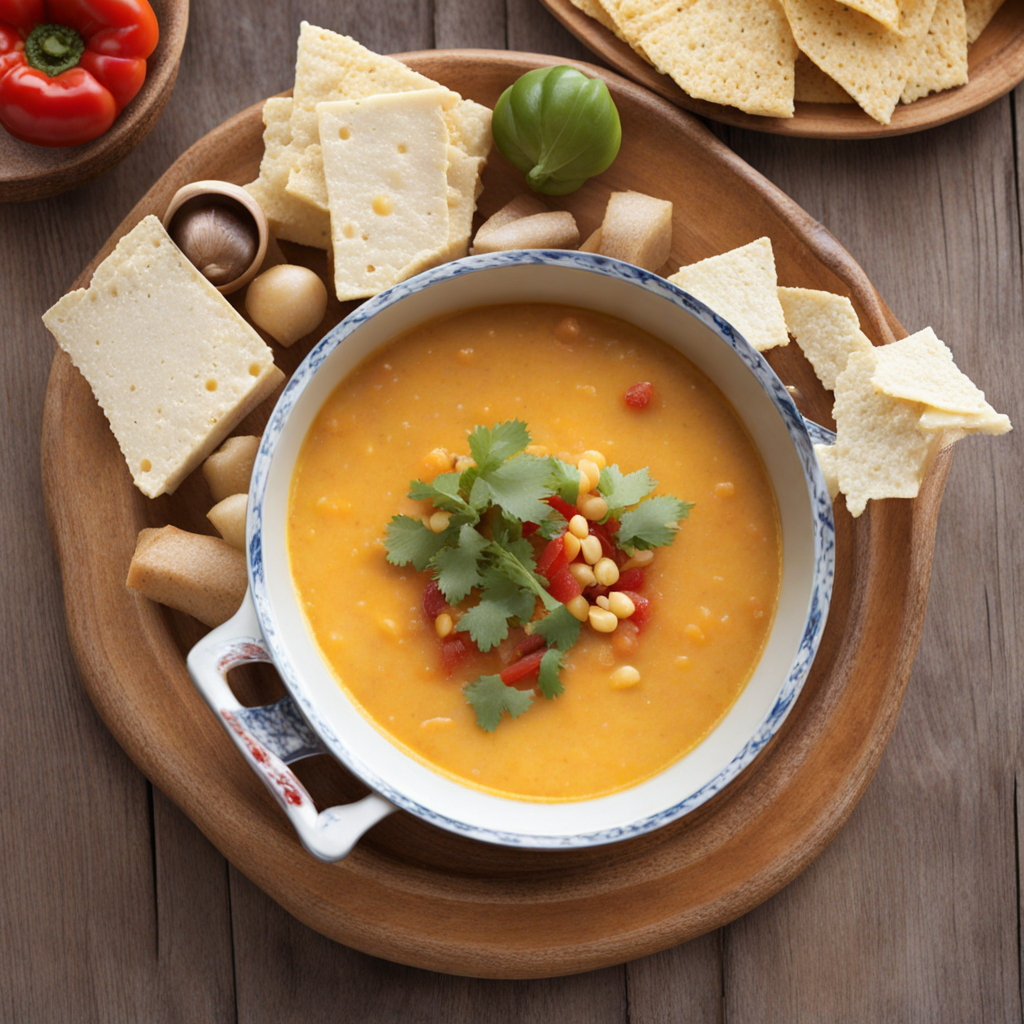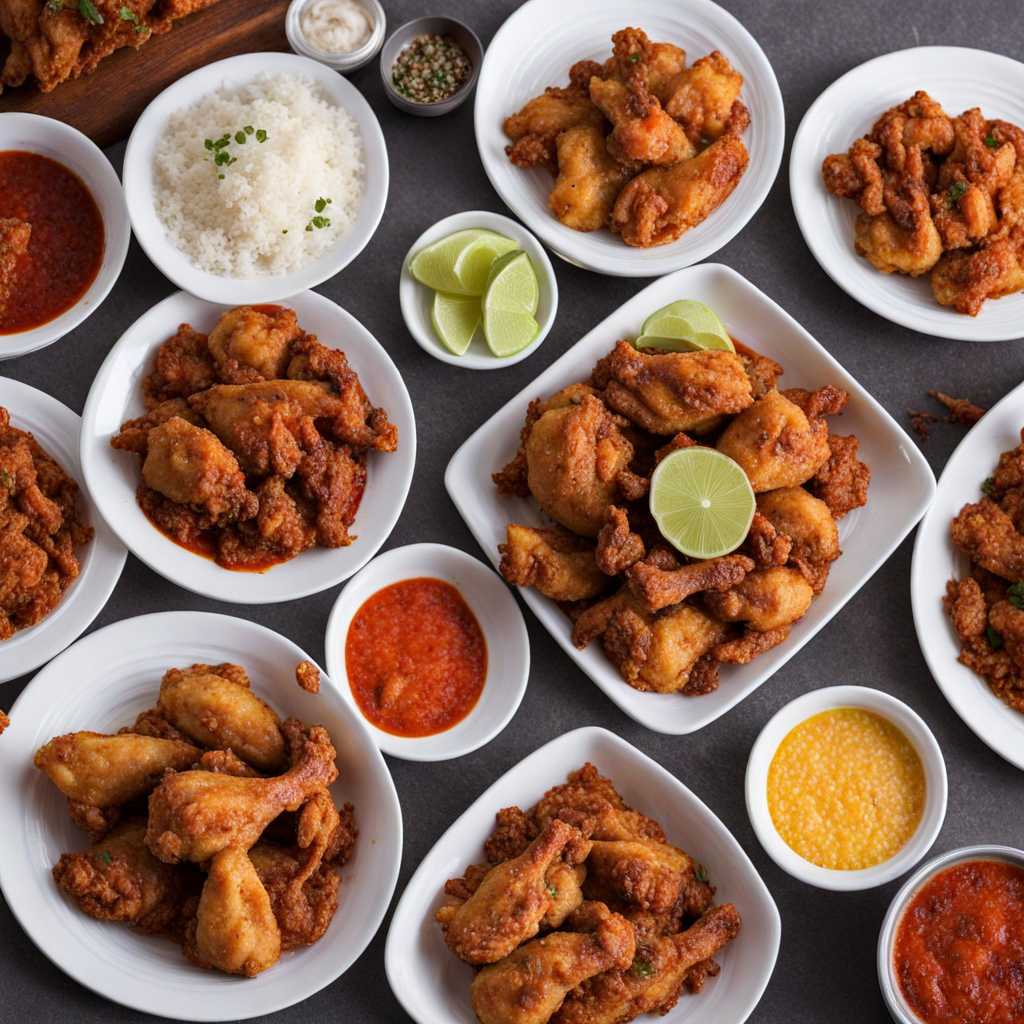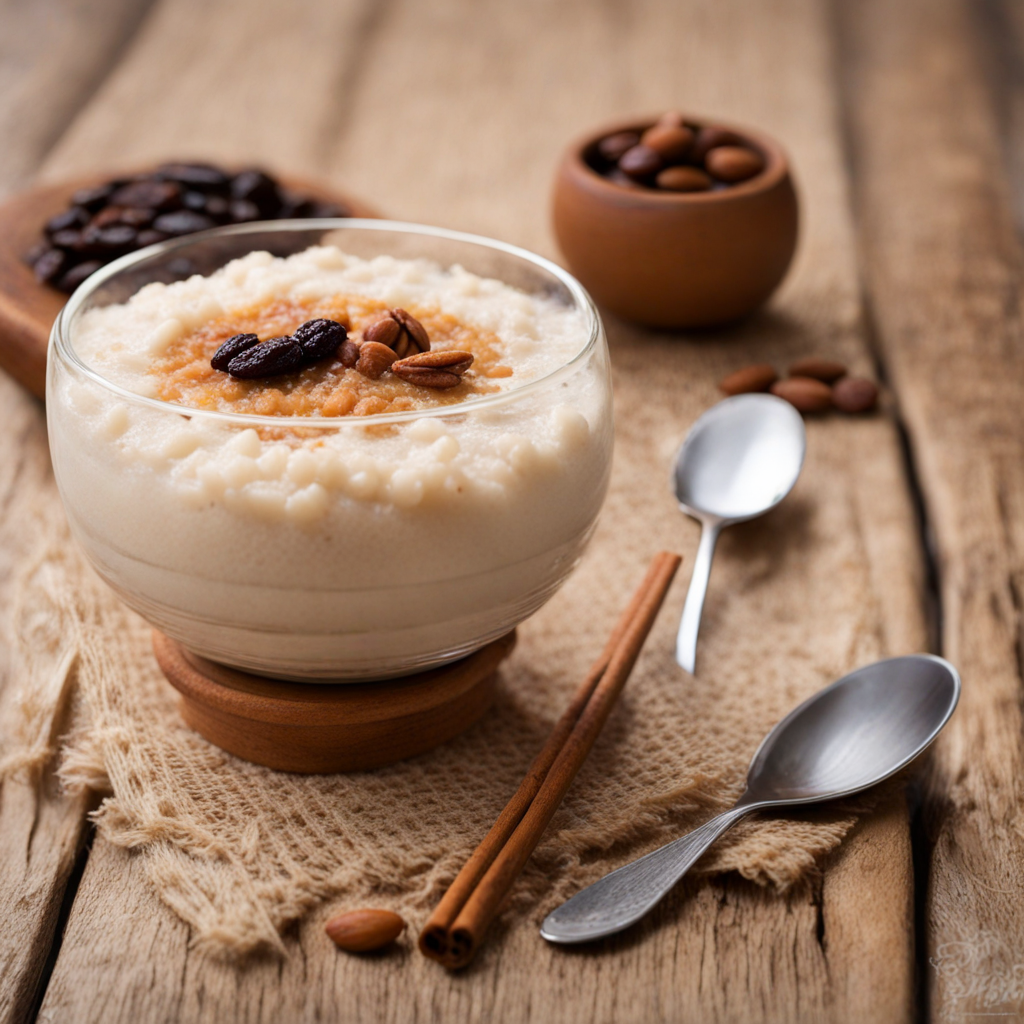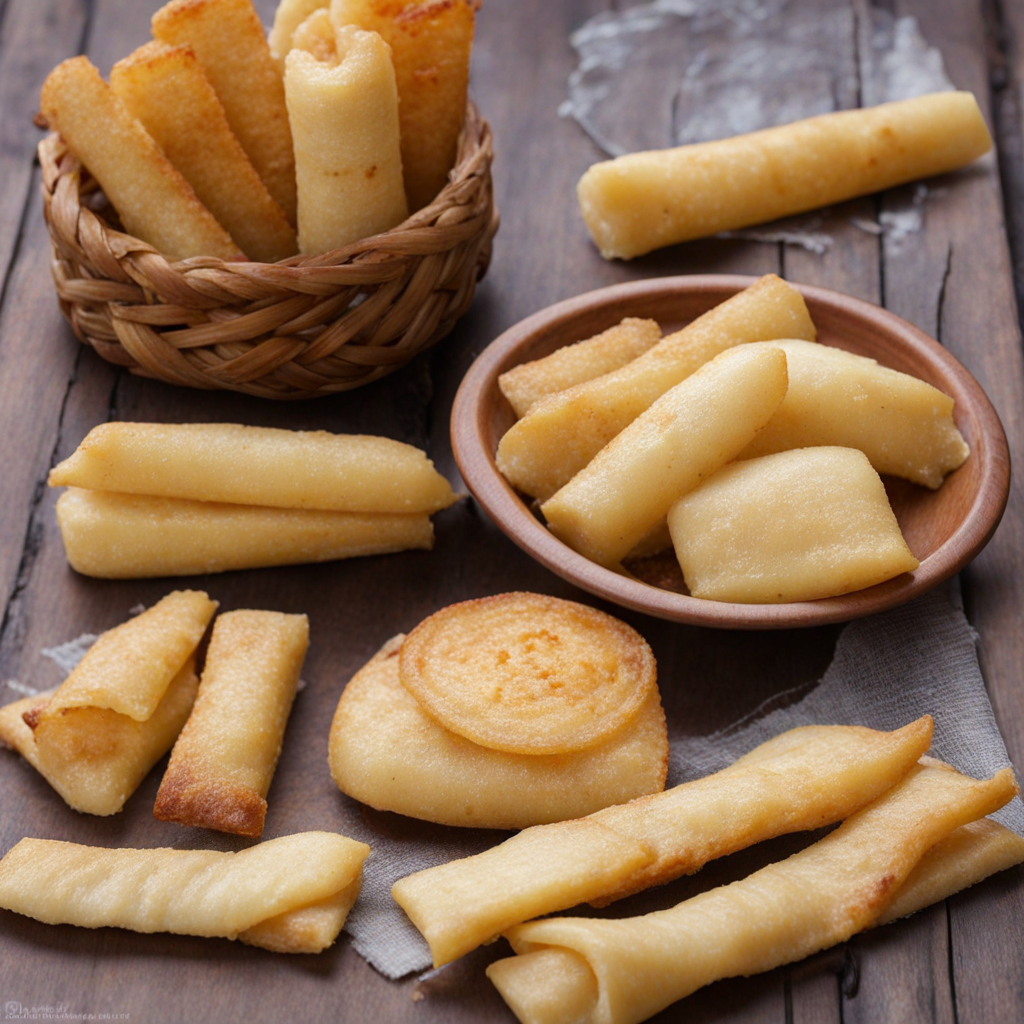Queso Humacha
Queso Humacha is a delightful Bolivian dish that showcases the rich flavors of traditional Andean cuisine. This unique dish is primarily made with fresh cheese, which is typically prepared from cow's milk and has a creamy, slightly tangy flavor. The cheese is complemented by a variety of ingredients, including white corn, which adds a subtle sweetness and texture, and spices such as cumin and ají to provide warmth and depth. The combination results in a savory dish that is both comforting and satisfying, making it a popular choice among locals and visitors alike. What sets Queso Humacha apart is its preparation method. The ingredients are cooked together in a pot, allowing the flavors to meld beautifully. As the dish simmers, the cheese melts into a luscious, gooey consistency, blending seamlessly with the corn and spices. The dish is often served warm, making it perfect for sharing during gatherings or family meals. The vibrant colors of the cheese and corn create an appealing presentation, inviting diners to indulge in its rich taste. Queso Humacha is not just a dish; it’s a cultural experience that embodies the essence of Bolivian hospitality. Often enjoyed with a side of fresh bread or accompanied by a light salad, this dish offers a comforting taste of Bolivian tradition. Whether you're a seasoned food lover or an adventurous eater looking to explore new flavors, Queso Humacha promises a delicious journey into the heart of Bolivia's culinary heritage.
How It Became This Dish
The Rich Tapestry of Queso Humacha: A Bolivian Culinary Delight #### Origins and Early History Queso Humacha is a traditional Bolivian dish with profound cultural roots, primarily associated with the Andean region. This dish is particularly popular in the departments of La Paz and Oruro. Its origins can be traced back to the indigenous peoples of the Andes, who have cultivated crops and raised livestock for centuries. The Andes, with their diverse microclimates, provided a variety of ingredients that formed the basis of local diets, allowing for the development of unique culinary practices. The name "humacha" is derived from the Aymara language, which translates to "a dish made with cheese." It reflects the indigenous practice of incorporating local ingredients into dishes that are not only nutritious but also rich in flavor. The primary ingredients of Queso Humacha include corn, cheese (typically fresh cheese), and a variety of seasonings. The use of corn underscores the significance of this crop in Andean culture; it has been a staple food for millennia, revered for its versatility and nutritional value. #### Cultural Significance Queso Humacha is more than just a dish; it embodies the spirit of Bolivian culture and the deep connection between the people and their land. It is often associated with traditional festivals and communal gatherings, where families and friends come together to celebrate their heritage. In rural areas, preparing Queso Humacha can be a communal activity, with multiple generations participating in the cooking process, sharing stories, and passing down culinary traditions. The dish is also symbolic of resilience and adaptability. Throughout history, the indigenous populations of Bolivia have faced numerous challenges, from colonization to modernization. Yet, they have preserved their culinary traditions, adapting them over time while maintaining a strong sense of identity. Queso Humacha stands as a testament to this cultural endurance, serving as a reminder of the importance of community and heritage. #### Ingredients and Preparation The fundamental components of Queso Humacha highlight the richness of Bolivian agriculture. The dish typically starts with fresh corn, which is often ground into a dough-like consistency. The corn is combined with fresh cheese, usually made from cow's milk and known for its soft, creamy texture. The combination of these ingredients is seasoned with herbs and spices, which can vary by region and family tradition. To prepare Queso Humacha, the corn dough is mixed with cheese and sometimes flavored with ingredients like onions, chili peppers, or herbs such as cilantro. The mixture is then wrapped in corn husks or banana leaves and steamed, allowing the flavors to meld together. The steaming process also gives the dish a distinct aroma, enhancing its appeal. The method of preparation can vary, with some families opting to bake the dish instead of steaming it, resulting in a slightly different texture and flavor profile. This flexibility in preparation methods demonstrates the creativity of Bolivian cooks and the regional variations that enrich the culinary landscape. #### Development Over Time As Bolivia has evolved over the centuries, so too has Queso Humacha. The dish has undergone transformations influenced by globalization, urbanization, and the introduction of new ingredients. In urban areas, particularly in cities like La Paz, you may find modern interpretations of Queso Humacha that incorporate international flavors or presentation styles, while still retaining its core essence. The rise of tourism has also played a role in the evolution of Queso Humacha. As visitors seek authentic culinary experiences, many restaurants and food markets have begun to highlight traditional dishes. This exposure has led to a renewed interest in Queso Humacha, not only among locals but also among tourists who are eager to explore Bolivian cuisine. Moreover, the global movement towards sustainable and local eating has brought attention to dishes like Queso Humacha. The use of locally sourced ingredients and traditional methods of preparation aligns with contemporary values of food sustainability and community engagement. This resurgence has prompted younger generations to reconnect with their culinary heritage, ensuring that recipes and cooking techniques are passed down and preserved. #### Queso Humacha in Contemporary Bolivia In contemporary Bolivia, Queso Humacha has found its place not only as a beloved home-cooked meal but also as a staple at social gatherings and celebrations. It is often featured in festive occasions, such as weddings, birthdays, and religious ceremonies. The dish embodies the warmth and hospitality of Bolivian culture, where sharing food is an integral part of building and maintaining relationships. The dish has also gained traction in the realm of culinary festivals, where chefs and home cooks showcase their variations of Queso Humacha. These events celebrate Bolivian gastronomy and promote the importance of preserving traditional dishes. Furthermore, the rise of social media has allowed for the sharing of recipes, tips, and personal stories related to Queso Humacha, fostering a sense of community among food enthusiasts. While Queso Humacha remains deeply rooted in its traditional origins, it is also a canvas for culinary innovation. Chefs experiment with different cheeses, spices, and cooking techniques, resulting in new interpretations that honor the essence of the dish while appealing to modern palates. This blending of tradition and innovation reflects the dynamic nature of Bolivian cuisine, which continues to evolve while celebrating its rich heritage. #### Conclusion Queso Humacha is more than just a delicious dish; it is a symbol of Bolivian identity, culture, and resilience. From its indigenous roots to its contemporary interpretations, Queso Humacha tells a story of community, heritage, and adaptability. As food historians and culinary enthusiasts explore the depths of Bolivian cuisine, Queso Humacha stands out as a vibrant representation of the country's rich gastronomic tapestry. It invites both locals and visitors to experience the warmth and richness of Bolivian culture, one delicious bite at a time.
You may like
Discover local flavors from Bolivia







